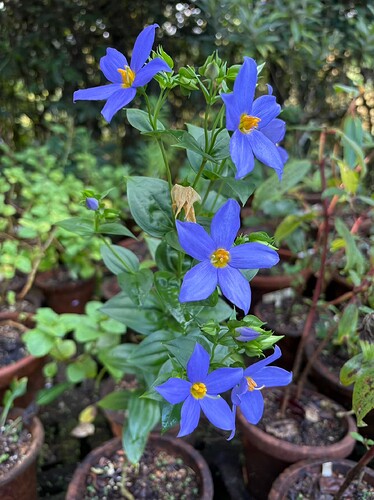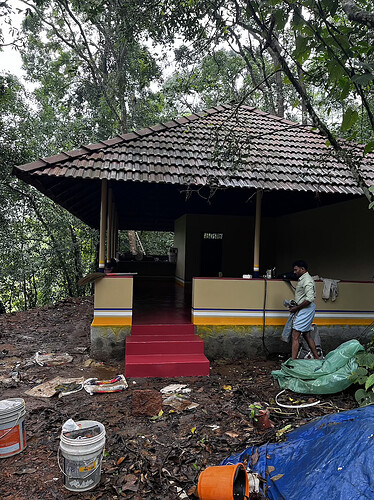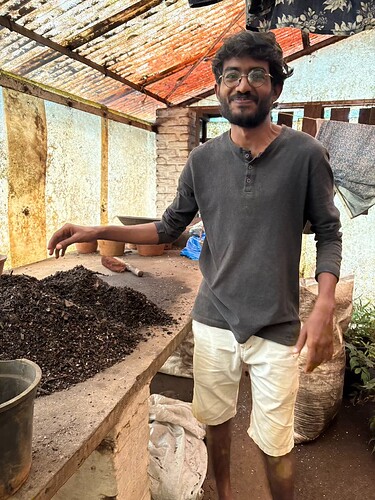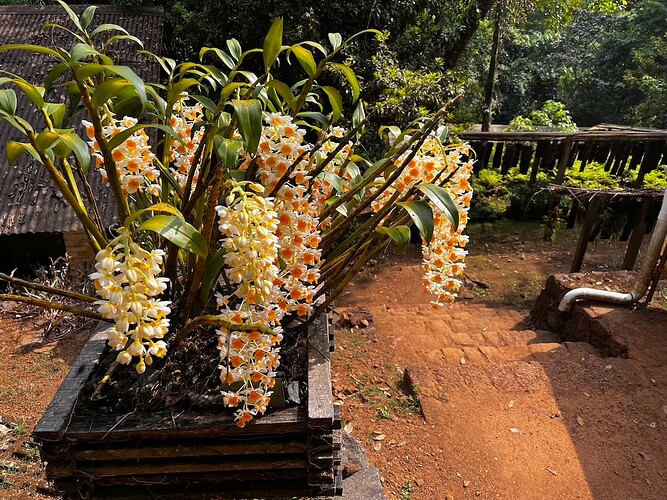Dear Rainmatter Community,
In 2024, with the generous support of the Rainmatter Foundation, Gurukula Botanical Sanctuary (GBS) entered a phase of intentional consolidation and revitalization. The one year funding (ending in December 2024) allowed the Sanctuary to strengthen its core work in plant conservation, community livelihoods, and ecological education, while laying the foundation for a new integrated learning initiative — the School of Ecological Nurturance.
This report documents key milestones, outcomes, and lessons from the grant year, highlighting how GBS continues to respond to ecological, cultural, and climatic challenges with care, creativity, and community-based resilience. Although uploaded late in The Grove, there have been regular updates in the monthly tracker set up by Rainmatter, a most useful feature to help document progress.
I. Update since the last report
- Plant Conservation and Habitat Restoration
- The Sanctuary maintained and cared for over 2,000 native plant species, including ferns, orchids, mosses, Impatiens, begonias, and aroids.
- Focus remained on ecosystem gardening for species recovery and habitat restoration.
Invasive understory species in rewilding zones were cleared and replaced with native species. - A wetland-lakeland system was developed to support aquatic biodiversity; it is approximately 75% complete.
- Botanical documentation and propagation continued in the nursery and forest zones.
- Infrastructure added included a basic open hall for gatherings and programs.
- Education and Public Engagement
- Over 2000 day visitors, primarily school children, were guided through the gardens and forest areas.
- Several residential educational programs were conducted for students and teachers.
- More than 75 adult participants attended short-term retreats and workshops.
- Monthly Rewilding Retreats were held on the third weekend of each month (April to October), covering ecological learning and self-inquiry.
- Two workshops on insects and plants, including nature journaling, were held.
- Work began on formally shaping the School of Ecological Nurturance as a long-term learning initiative.
- Community and Apprenticeship Programs
- 7 Paniya tribal youth participated in apprenticeship programs focused on nursery care, gardening, and forest work.
- 5 interns from other regions of India contributed to short-term ecological and educational projects.
- The local women’s team continued to lead garden management, nursery operations, and community kitchen work.
- The kitchen served daily meals for staff, apprentices, and visitors.
- Infrastructure and Facilities
Infrastructure upgrades were modest but strategic — oriented toward enhancing the experience of visitors, educators, and residents alike.
Completed:
- Construction of a new open-sided hall, usable for overnight stays and workshops even during the heavy monsoon months.
- Ongoing improvement of gardens, walkways, and display areas to enhance access and learning for day visitors.
Identified Needs:
- Accessible infrastructure (bathing/toilets, mobility access, storage space) remains a key area for development, particularly for disabled and elderly visitors.
- Shelters and weather-resilient facilities for wet-season engagement need investment (such as accomodation for long term apprentices, security staff housing)
- Climate Challenges and Adaptive Practice
The double disaster of a severe drought in 2024 followed by the cloudburst of July 31, presented one of the most significant challenges of the year:
- Several plant populations underwent acute water stress, and confusion.
- On the one hand, the need to expand our water delivery systems, and the other to shelter species from deluges, prompted reflection on climate-resilient horticulture and restoration practices, how to wean plants, when to plant them out etc
Despite this, GBS’s gardens — thanks to careful mulching, usage of canopy and netting etc, and species selection — remained relatively stable. However, this drought underscored the need to:
- Expand water harvesting and storage systems (eg completion of lakeland, desilt old tank)
- Document and share, adaptive gardening techniques across ecologically sensitive regions
- Incorporate climate resilience into education and community engagement
- Study wild species in the forest more carefully.
- Research and Collaboration
GBS strengthened several collaborations during 2024:
- With Navendu Page (Thackeray Wildlife Foundation)
- With NCF’s A.P. Madhavan, who is initiating long-term monitoring of GBS’s ecological recovery processes.
- With the Hume Centre for Ecology and Wildlife Biology, focusing on human-wildlife coexistence and conflict resolution, climate adaptation and education.
- With Calicut University, NCBS, TDS and ATREE through the Bio Blitz, an intense botanical survey to establish species checklists on three transects through GBS lands.
These relationships are helping GBS transition from a practice-based to a practice-and-research-based sanctuary, without compromising its experiential and indigenous/traditional knowledge roots.
7… Reflection and Looking Ahead
II. Progress on the goals listed while on-boarding:
At the time of onboarding with Rainmatter Foundation in early 2023, GBS identified the following key goals:
- Strengthen core team (gardeners, educators, apprentices). We are glad to say this is achieved. The core team remained stable. 7 new Paniya apprentices and 5 interns joined in 2024. Many volunteers and well wishers from the extended GBS community pitched in to various degrees to take forward projects and support exisiting work.
- Consolidate and expand species care and habitat restoration. This is ongoing. Over 2,000 species under care. Wetland-lakeland system was 75% complete at the end of the grant period, and completed in May 2025. Nursery and rewilding efforts continued.
- Develop and pilot education modules under the School of Ecological Nurturance. Achieved, now a rich and effective template for adult programmes is available for future implementation.
- Improve infrastructure for programs and ecological gardening. This has had partial progress. Open hall constructed. Additional bathing and sanitation facilities still pending.|
III. Any challenges
- Climate Extremes: A prolonged drought affected surrounding forests and required emergency irrigation and shading efforts in the garden.
- Limited Infrastructure: Sanitation, accessibility, and wet-season shelter remain areas requiring funding and planning.
- Staff Capacity: Expanding the education arm while maintaining ecosystem care stretches the small core team.
- Communication & Documentation: Time and capacity for content creation, reporting, and data synthesis remain limited given on-ground demands.
IV. Any new avenues of collaboration (with other Grantees of RCF or other NPO/NGO):
- The Forest Way Trust, Adavi Trust and Upstream Ecology for developing and launching The School of Ecological Nurturance in 2025
- The Habitats Trust for ongoing work, research, survey and dissemination of tender shade dependent plants under the Canopy Care programme
- Centre For Learening, Shibumi School, Marudam Farm School and various other alternative schools for deepening the ongoing residential schools programmes
- ERA-India for collaborating on regional and national scale intitiatives and policy level work in ecological restoration
V. Highlights from the initiatives being undertaken as part of your organization
- Rewilding Retreats: Monthly 3-day gatherings open to the public (April to October), combining ecological learning, observation, and self-reflection. These are tremedously appreciated.
- Nature-Based Workshops: Insect and plant relationship workshop (May), and various adult learning sessions are very well attended.
- Public awareness engagement: Day visits for over 1,000 students; and a total of over 2000 visitors
- Habitat Restoration: Wetland-lakeland system near completion; rewilding of understory in degraded plantation zones underway.
- Apprenticeship Expansion: youth trained in nursery and field practices; some now supporting peer learning.
VI. Outcomes you are chasing for the next 6 months (these can remain the same if unchanged since the last update)
- Complete the wetland-lakeland system to stabilize local microhabitat, plant, fish, bird, and amphibian populations.
- Launch the School of Ecological Nurturance,with three partner organizations.
- Improve visitor infrastructure, especially for sanitation and group accommodation during wet season.
- Expand adaptive responses to drought and climate change, including water systems and revised horticultural protocols.
- Draft internal methodologies and learning materials for broader peer sharing (videos, newsletters, maps, biodiversity lists)
VII. KPIs (please use this section to let us know of the impact and reach of your work since the last update)
Jan–Dec 2024
- Plant species under active care 2,000
- Youth apprentices 8
- Interns and volunteers hosted 5
- Adult program participants 150
- Student visitors (school groups) 1,000+1500
- Rewilding retreats hosted 9
- Workshops (public) 3
- Full-time daily wage local staff (women-led): 35
- Wetland system completion 75%
VIII. Can Rainmatter be of help with anything at all
Yes! With institutional funding so we can launch the School of Ecological Nurturance from GBS. Our emphasis on every member of community being a facilitator of ecological wisdom and practice means that all human and non human members of this place can support programmes of high quality and integrity. The place as a whole becomes a medium of learning and action.
IX. Any additional details you would like to provide
- Media coverage the School of Ecological Nurturance is in planning; photos from retreats and programs are being archived.
- Several returning volunteers and apprentices are now part of the extended learning and support network.
- GBS is planning to digitize 40+ years of plant observation and nursery records to support ongoing conservation strategy.
X. Please also share any images or videos that you have documented as part of your work
Note of Gratitude
We are immensely grateful to the Rainmatter Foundation for believing in our work and giving us the flexibility and trust to grow at the pace of a forest — steadily, relationally, regeneratively.
As the grant concludes, GBS is poised to:
- Officially launch its School of Ecological Nurturance
- Deepen community-based conservation livelihoods
- Address access and inclusion gaps in its infrastructure
- Advance partnerships in monitoring, climate adaptation, education and outreach
Your support has helped safeguard plant species, train young stewards, build community, and co-create a place where nature and people support each other. The 2024 grant period allowed GBS to do what it does best: care deeply, and build from the roots. Rather than focusing on growth in scale, the team chose to strengthen its own ecosystem — tending relationships (human and more-than-human), refining processes, and rooting future plans in lived experience.







